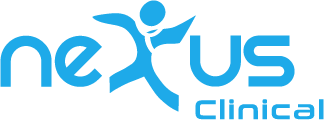
It could be overwhelming to look at the per page pricing of an EHR integrated fax module. However, using an independent fax has many many hidden costs that are often overlooked.
In this article, we will compare EHR integrated and independent faxes to help you decide what’s the right choice.
Fax Workflows
Let us take a look at how the workflows differ for independent fax machine vs EHR integrated eFax:
When You Receive a Fax
With an independent fax machine, you usually have a printed copy to scan, locate patient records on your EHR, and then upload it. You also need to store paper fax in designated retention/shredding bins according to HIPAA requirements and your practice policies. This is a manual process that usually takes 2-5 minutes and is prone to human errors.
In an EHR integrated eFax, the faxes are received in the EHR inbox. You can simply view the efax, search the patient, and assign fax documents to the patient. There is no paper involved. And the whole process is done within a few clicks, in less than a minute.
When You Send a Fax
While using a fax machine you are required to print documents, fill coverage, key in sender number. Then you need to wait till the fax is sent completely to the recipient. And again, due to HIPAA requirements, you need to manage printed document pages for retention/shredding. This process too can take 2-5 minute.
With an eFax integrated module, you simply need to locate patients and select documents to be faxed and send the fax. Usually, EHR software keeps an address book and makes it easy to search recipients. The software will also auto-generate coverage and attach with outgoing fax automatically. This process takes less than 1 minute. In case of failed attempts, the EHR will also retry sending fax automatically or notify you about the status of the fax. Again, being a paperless process, you don’t have to manage retention/shredding of papers.
Real Costs Comparison
Considering both workflows you can easily see that the biggest cost saving you have with the integrated eFax module is the saving of your staff’s time in managing the faxes. Many practices send and receive more than 1000 pages every month. So you could potentially save a couple of hours every day from your staff’s time.
Another saving you get with integrated eFax is by going paperless; you are saving ink, paper costs and the need for managing physical fax machines.
By reducing paper use you can have better HIPAA compliance with fewer efforts.
Conclusion
After taking a look at the above comparison you can see that the integrated fax module saves a significant amount of time required for sending and receiving faxes, you can use your and your staff’s time more efficiently and economically. You can also have better compliance and as an add on bonus save environment by going paperless. Integrated EHR/EMR fax is the way to go.






